The future of diamonds
Monaco Life speaks to diamond expert Alberto Vitale, founder of Monaco’s Vitale 1913, about Covid’s impact on the industry, how it historically sent down diamond prices, and the rise of transparency thanks to blockchain.
Like many diamond traders throughout the world, Alberto Vitale follows the Rapaport Diamond Report. Created in the late 1970s by controversial figure Martin Rapaport, the list has become the de factopricing baseline for wholesale polished diamonds.
Despite backlash from some heavy hitters within the industry, Rapaport believes that diamonds are a commodity as they are bought and sold for cash. His critics say diamonds are unique and valued by subtle idiosyncratic characteristics like colour, clarity and cut, and that Rapaport is driving down diamond prices with his price guide.
Monaco Life: When did you see the effect that Covid was having on the pricing of diamonds?
Alberto Vitale: For the first time in his life, Martin Rapaport sent an email last year to around 7,000 significant diamond traders across the world asking if we wanted to do something different. He explained that a lot of rough diamonds had arrived in the market, which is normal because of Christmas, Chinese New Year and Diwali celebrations, without potential clients due to Covid.
After reducing prices in his 20th March price list, he asked if we would agree to the short-term suspension of the price list until 1st May.
He downsized the diamond price list to reflect their true value, by between 5% and 8%, which has never happened before.
In reality, the price in the market actually went down between 10% and 15%, and we were able to buy diamonds at that reduced price for the first time ever. By the end of the year, diamond prices returned to the same pre-crisis level.
But a lot of things changed that year. Many of us agreed with Martin Rapaport that diamond trading needed to be more fair and accurate, more transparent and socially responsible.

How exactly did the crisis force the diamond trading industry to be more transparent and why is this important?
We saw that companies who were not providing customers with certificates and reliable information about the legitimate source of their diamonds were beginning to suffer. Companies that were more open, like my small company who are used to giving information about diamonds, had positive feedback because people were more confident about investing in our diamonds as a store of value.
Eventually, most companies began to understand that they have to be more transparent and provide information and certificates to their clients, to the point where practically all of the diamonds that arrive in the market now have a certificate.
There is also now the possibility to transcribe the certificate number inside the diamond. This creates a clear and reliable relationship between the stone and the certificate, and between the certificate and the market value.
It makes the resale process much easier for us. If we had diamonds here, I could make you an offer right now. This easy way to work made it possible for a lot of diamonds to be sold last year, even during the crisis.
I often use this as an example: When my father was selling diamonds, he would say: “You can trust me, I am a third-generation diamond trader. I am honest, I have a large, respected company, etc.”
Today, I prefer to say to my clients: “Don’t trust me, trust the information and the certificates that I am giving you.” Of course, I too have a reputation, but I don’t want to rely on that; I want my clients to be reassured by the reliable information that I can provide about their diamonds.
Blockchain is able to safeguard this transparency by storing information in such a way that it can’t be altered without those changes being recorded as well. Where do you see blockchain in the future of diamond trading?
We are currently in the process of creating a system where information about each diamond is stored on the blockchain. It is not only small company’s like myself doing this; big companies are also working in this direction, such as Tiffany & Co.
By 2021, I believe people will be able to buy diamonds with a code inside them, and all the information about that diamond – where it came from, who cut it, the certificate number, who set the stone, etc. – will be available on the blockchain.

What will this mean for the diamond industry?
The small companies who want to remain “closed” and not transparent will not survive. There is no space for them in the market anymore. Now, the attitude is to open the door and be truthful and transparent, because everyone benefits.
How are diamond traders such as yourself looking to become more socially responsible?
Firstly, there is the need for transparency about the origin of a diamond. Rapaport says that we should ask ourselves, ‘Is our diamond dream someone else’s nightmare?’. ‘Do we care if people are killed or hurt so we can sell jewellery?’. ‘Are we responsible for what we buy and sell?’. He points to the ‘shameful’ trade in Zimbabwean diamonds and blood diamonds from the Congo, and says that social responsibility is not just a consumer matter, it is a ‘defining aspect of our humanity and who we are as a trade’.
There is also the trend towards a circular economy. New age consumers across the world are creating demand for unique one-of-a-kind jewellery that is environmentally positive and socially responsible. According to Rapaport, branded estate jewellery is particularly strong. ‘Recycled jewellery’ is now ‘Upcycled jewellery’.

Did Covid illustrate that diamonds are a good investment as a store of value, particularly during times of crisis?
Yes, because between March and June, the price of diamonds was 10% to 15% less than today. So So I brought, and I suggested to my clients and friends to buy, and it was a good investment.
Today, the prices for some diamond categories are increasing significantly, particularly for blue, pink, and some yellow diamonds because they are quite rare. The fact that there were many diamond sales at auction last year shows that it is a good investment. More people are interested in diamonds than before, so the crisis has helped in that way.
It has definitely shown that diamonds as a store of value are an opportunity in a volatile, uncertain world.
But like the rest of the world, the crisis has challenged the industry to implement solutions to survive. And I think the future of smart companies in the diamond industry looks much brighter as a result.
Special thanks to Monaco Life and Cassandra Tanti for their support and for always giving us the opportunity to be feature in their magazine Monaco Life.



